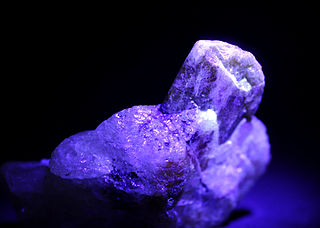Knowledge
02.05.2022 Clarity, Color Quality & Fluorescence of Gemstones
When evaluating gemstone quality, the four Cs—carat, color, clarity, and cut—are central. While we have already discussed what makes gemstones valuable in a general article, here we will revisit factors related to the gemstone color: Clarity, color quality, and the phenomenon of fluorescence. Gemological laboratories evaluate these aspects and record the results in the gemstone’s certificate.

Clarity in Colored Gemstones
A definitive clarity scale has been established for diamonds; however, the clarity expectation for colored gemstones depends on the type of mineral and is judged less strictly. Inclusions affect clarity. These are foreign bodies that become trapped as gemstones grow. They can be other crystals growing around the gemstone, voids, liquids, or sediments. Inclusions can also be used as markers of origin when certain types indicate a mine or finding area.
Colored gemstones are classified into one of three clarity categories: Type I (eye clean, e.g., blue topaz or aquamarine); Type II (small inclusions, e.g., ruby); and Type III (almost always included, e.g., emerald). Each colored gemstone is then graded on a scale from “eye clean” to opaque (“severely included”). This rating is shown on the gemstone’s certificate. It can be compared with the ratings of other gemstones of the same type; for example, the clarity of one blue sapphire can be compared with that of another blue sapphire. However, a green emerald with few inclusions may be more valuable than an eye-clean aquamarine.

Color Quality of Gemstones

Depending on the type of gemstone, certain colors are highly sought after, such as “pigeon’s blood” rubies and royal blue sapphires. The color quality — how intense and rich the coloring is — has a significant impact on the price, as does the stone’s uniform color distribution. Natural colored stones whose color is unaffected by firing and other treatments are considered more valuable than their treated counterparts. Great expertise is required to determine the color and value.

Fluorescence in Gemstones
When exposed to ultraviolet (UV) light, some gemstones exhibit a different color. This phenomenon is called fluorescence because it was first observed in 1852 in the mineral fluorite. The physical process is as follows: The UV light raises electrons to a higher level. When the electrons return to the ground state, they emit energy in the form of light within the visible spectrum, causing the stone to appear a different color. If the color effect lingers after UV light exposure stops, it is called phosphorescence. Both fluorescence and phosphorescence are types of luminescence. Other ways to trigger luminescence include electricity (electroluminescence) and X-rays (radioluminescence).
To date, approximately 200 minerals are known to fluoresce. Minerals containing iron prevent luminescence, while uranium compounds, chromium, manganese, and tungstates in the crystal lattice lead to fluorescence. Fluorescence can occur in many colors. For example, yellow topaz shows orange fluorescence, opal shows blue fluorescence, and ruby shows red fluorescence. About one-third of diamonds exhibit fluorescence, most of which show a blue color under UV light, with yellow and white being rarer.
Fluorescence plays a role in identifying gemstones and distinguishing minerals of the same color. Fluorescence can also be used to distinguish synthetic stones from natural ones.


